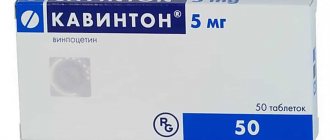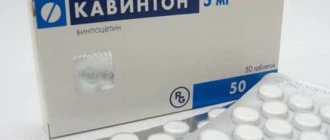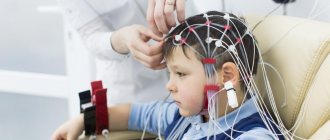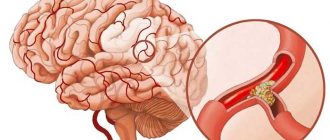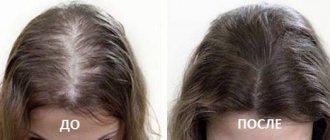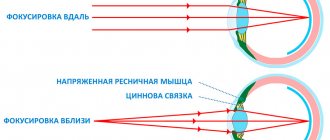Chemical composition and dosage forms
The active compound of the drug is vinpocetine. It has a vasodilator (vasodilator), antioxidant, neuroprotective effect, stimulates metabolic processes in tissues, and normalizes the rheological properties of blood.
Cavinton is produced in two pharmaceutical forms:
- Tablets: in blisters, white, with the Cavinton inscription engraved on the surface, the dosage of the active substance is 5 mg. Auxiliary components of the drug: silicon dioxide, talc, magnesium stearate, starch.
- Infusion solution in ampoules of 2 and 5 ml, used intravenously. In addition to vinpocetine, it contains distilled water, ascorbic and tartaric acids, and sorbitol.
How Cavinton works
The instructions for use of the drug inform that vinpocetine belongs to the category of cerebrovasodilating substances. It stimulates metabolism and nutrition of the brain, prevents the development of atherosclerotic lesions, improves the absorption of glucose and oxygen by cells. Cavinton helps improve the functioning of the adrenal glands, helps the exchange of norepinephrine, serotonin and other hormones.
The drug works selectively. Affects cerebral blood volume, reduces resistance of the cerebral vasculature. This process helps restore circulation in tissue areas exposed to ischemia. At the same time, the activity of the general blood circulation does not change. Heart rate and blood pressure levels remain the same after taking the medicine. The so-called reverse steal effect ensures that the affected areas remain viable. Cavinton:
- normalizes blood viscosity;
- reduces excessive platelet aggregation;
- increases cell resistance to hypoxic effects;
- slows down the penetration of adenosine into red blood cells, making them more elastic and preventing breakdown.
The drug tablets quickly dissolve in the stomach and are absorbed into the blood. The effect of the substance reaches its maximum within 1–1.5 hours. The effectiveness of injections is slightly higher. The drug does not accumulate in the body. It is excreted completely, without forming metabolites, along with feces and urine within 24 hours after administration.
Pharmacological properties of the drug Cavinton tablets
Vinpocetine has a complex mechanism of therapeutic action associated with a beneficial effect on blood circulation and brain metabolism, as well as on the rheological properties of blood. It has a neuroprotective (cerebroprotective) effect due to: reducing the severity of damaging cytotoxic reactions caused by stimulating amino acids; inhibition of the functional activity of both cellular transmembrane sodium and calcium channels, and NMDA and AMPA receptors; potentiation of the neuroprotective effect of adenosine; enhancing the absorption and assimilation of glucose and oxygen by the brain; increasing the resistance of neurons to hypoxia, stimulating the transport of glucose - a universal source of energy for the brain - across the BBB; transferring glucose metabolism to an energetically more favorable aerobic direction; selective inhibition of Ca2+-calmodulin-dependent cGMP phosphodiesterase, increasing the concentration of cAMP and cGMP in brain tissue, as well as the concentration of ATP and the ATP/AMP ratio; stimulating the cerebral metabolism of norepinephrine and serotonin; stimulating the ascending noradrenergic system; has an antioxidant effect. Improves microcirculation in brain tissue by inhibiting platelet aggregation, reducing increased blood viscosity, increasing the elasticity of red blood cells and inhibiting their absorption of adenosine; promotes interstitial oxygen transport by reducing the affinity of red blood cells for it. Selectively enhances cerebral blood flow: increases the cerebral IOC fraction; reduces cerebral vascular resistance without significantly affecting the parameters of the systemic circulation, with virtually no effect on blood pressure, blood flow, heart rate, and peripheral vascular resistance; does not cause the “steal” phenomenon - on the contrary, when it is used, the blood supply to the ischemic but still viable part of the brain increases - the “reverse steal” phenomenon. Bioavailability when taken orally - 70%. The maximum concentration in blood plasma is observed 1 hour after administration. The half-life is 4.8 hours.
What is Cavinton used for?
The drug eliminates vascular damage, restores blood circulation, microcirculation and normal metabolism in various locations. Therefore, the list of his indications is extensive.
Neurological disorders:
- vertebrobasilar insufficiency of cerebral vessels;
- post-stroke condition: as part of complex treatment;
- transient ischemic attacks;
- vascular dementia;
- encephalopathy after traumatic brain injury, as a result of hypertension;
- damage to various parts of the brain associated with disruption of their nutrition and blood supply;
- memory impairment, mental disorders;
- movement coordination disorders;
- headache.
In ophthalmology, Cavinton is used to relieve vascular disorders that have caused deterioration of vision and the development of degenerative processes:
- with vasospasm, dystrophy of the retina of the fundus of the eye;
- atherosclerotic changes in capillaries;
- with secondary glaucoma;
- for diabetic eye lesions;
- with thrombosis and embolic processes.
In otolaryngology, Cavinton is used for hearing impairment and lesions of the vestibular apparatus:
- age-related dizziness;
- Meniere's disease;
- hearing loss;
- motion sickness syndrome;
- tinnitus;
- cochleovestibular neuritis;
- complications caused by inflammation of the middle ear;
- various vasovegetative pathologies.
How to use Cavinton correctly: instructions
The medication is approved for patients over 18 years of age. Treatment with the drug in tablets requires long-term administration. The full course ranges from 1 to 8 months, depending on the type of disease. On average, to achieve pronounced results, Cavinton is taken for 3–4 months in a row:
- 1 tab. three times a day, without chewing;
- You need to take the medicine with a large volume of water;
- time of administration: 1–1.5 hours after meals.
The infusion drug must be administered intravenously: through a syringe or through droppers. Intramuscular use of the product is prohibited.
- Before use, Cavinton is diluted in saline solution at the rate of: 20 ml of concentrate per 500 ml of liquid;
- the prepared solution is suitable for use within 3 hours;
- therapy is carried out by administering 80 drops of the drug per minute.
The exact treatment regimen is formed by the doctor, taking into account the indications and general condition of the patient’s body. Cavinton should be discontinued gradually, gradually reducing the dosage over 3–5 days.
The medicine does not have a toxic effect on the kidneys and liver. It should be used with caution in case of hemorrhagic stroke: no earlier than 7 days after the attack.
Over the past decades, there has been a steady increase in the number of patients with sensorineural hearing loss (SNHL), leading to a decrease in the quality of life, disruption of social and work adaptation. According to official data, in Russia NST is observed on average by 15 people per 10 thousand population. The clinical picture of NTS is characterized by hearing loss and the appearance of tinnitus; in severe cases, dizziness and coordination disorders appear. The etiology of NST is varied. These are various infectious diseases caused by viruses or bacteria, intoxication with chemical or ototoxic substances, including medications, various injuries (mechanical, barotrauma, acoustic and vibration), age-related vascular disorders. Changes in weather, including fluctuations in air pressure, can also cause NTS. According to the timing of development, sudden NTS is distinguished (up to 12 hours from the onset of onset), acute (up to 1 month), subacute (from 1 to 3 months) and chronic (over 3 months) [1-4].
Patients with NTS, as a rule, turn to both an otolaryngologist and a neurologist. The otorhinolaryngologist conducts an examination and audiometric examination. A neurologist, in addition to examination, usually recommends ultrasound examination of trans- and extracranial vessels and MRI of the brain. However, this is often not enough for a correct diagnosis. A comprehensive examination of an otoneurologist is preferable; it is not easy to get a consultation with him. In this regard, in practice, the issue is resolved in this way - if the cause of NST is infectious diseases (ARVI, herpes, infectious parotitis), ear injury, ototoxic effects of chemicals or drugs (aminoglycoside antibiotics, salicylates), then the patient is treated by an otolaryngologist. With NCT of vascular origin, developed against the background of hypertension, cerebral atherosclerosis, pathology of the cervical spine, which, according to clinical studies, occur in more than half of the cases - in a neurologist [1-4].
Regardless of the etiology, with NST, dyscirculatory changes in hemodynamics are detected, which lead to the development of ischemia, hypoxia, metabolic disorders and trophism of the receptors of the ear labyrinth or the nuclei and pathways of the auditory analyzer in the brain. Therefore, treatment should be aimed at stabilizing cell membranes, dehydration, improving blood rheology, increasing venous outflow from the cranial cavity, and improving blood circulation in the inner ear. Complex therapy of NST, depending on the etiology, includes antibacterial, dehydration, vascular, hormonal, sedative and vascular therapy. Vestibulolytics (betagistine hydrochloride) and B vitamins are also effective [1-5].
As studies conducted in recent years have shown, one of the effective drugs with complex action, which improves microcirculation in the inner ear and metabolism of brain tissue, and also activates regenerative and antioxidant mechanisms, is Cavinton. In recent years, the effectiveness of Cavinton has been proven in 7 double-blind placebo-controlled studies, in a meta-analysis that included data on 731 patients, in open comparative long-term (10 years of use) studies that included 967 patients, in a long-term double-blind placebo-controlled randomized study on a large number of patients (more than 8000) [6, 7].
In Russia, in 2010, within the framework of the CALIPSO program, a multicenter clinical and epidemiological study was conducted to assess the effectiveness and safety of therapy with new forms of Cavinton and Cavinton Forte. We examined 4865 patients aged 31 to 85 years with chronic cerebral ischemia, who, along with other symptoms, had tinnitus, dizziness, and coordination problems. Currently available data indicate that the therapeutic effect of Cavinton depends on the dose and route of administration, so a new regimen for prescribing Cavinton has been proposed. It is recommended to begin therapy with Cavinton by infusion drip at a dose of 25-50 mg diluted in 400 ml of saline for 7 days, followed by switching to oral administration of Cavinton Forte 10 mg 3 times a day for 90 days. The new regimen for prescribing Cavinton led to a statistically significant reduction in tinnitus in 46% of patients included in the study, dizziness in 75%, and coordination disorders in 52% (Fig. 1, [8]).
Figure 1. Dynamics of regression of complaints from patients with chronic cerebral ischemia during therapy with Cavinton and Cavinton Forte (CALIPSO program).
It was found that Cavinton improves brain metabolism, increases the resistance of brain cells to hypoxia, inhibits platelet aggregation, reduces pathologically increased blood viscosity, and has an antioxidant effect. It has been proven that the drug does not affect systemic hemodynamics, does not change the electrical activity of the heart and does not have arrhythmogenic activity. By improving blood supply to the affected area, the drug does not cause the “stealing” phenomenon. The drug is well tolerated by elderly patients with liver and kidney failure and does not require dose adjustments. It is recommended to administer Cavinton slowly by infusion drip at a rate of up to 80 drops per minute. Based on the results obtained, it was concluded that the drug Cavinton has a complex mechanism of action. Numerous studies have established that the drug has a beneficial effect not only on cerebral circulation, cerebral metabolism and rheological properties of blood, but also on microcirculation in the inner ear, which allows us to consider the drug Cavinton and Cavinton Forte as the drug of choice for NST [8].
The effectiveness of the new Cavinton regimen was confirmed by the results of an open randomized comparative Russian study in the treatment of chronic sensorineural hearing loss of vascular origin.
The purpose of the study was to evaluate the effectiveness and tolerability of the new Cavinton regimen in the treatment of patients with NCT.
Patients and methods
We examined 50 patients aged from 30 to 65 years, suffering from 1 to 22 years of stage II-III vascular NCT. The patients were divided into 2 groups of 25 people. The course of treatment in group 1 began with intravenous infusion of Cavinton according to a gradually increasing scheme over 7 days from 20 mg to 50 mg in 500 ml of saline. After this, the patients took Cavinton Forte 10 mg 3 times a day for 11 weeks. A control group of 25 people received traditional treatment, including vitamins, physical therapy, hyperbaric oxygenation, and parameatal novocaine blockades. The evaluation of treatment results was carried out over time, taking into account complaints, audiological examination, tuning fork examination and the results of Doppler ultrasound of the carotid and vertebral arteries in the initial state and when turning the head. Tinnitus change was assessed using a visual analogue scale.
Results and discussion
In 20 (80%) patients receiving Cavinton, there was a significant improvement in hearing and a decrease in tinnitus. In the control group receiving traditional therapy, a positive result was observed in only 11 (44%) people. Moreover, in the group receiving Cavinton, a positive result was obtained much earlier compared to the control group (Fig. 2).
Figure 2. Dynamics of positive changes in the audiological picture in patients with sensorineural hearing loss. Based on previously obtained data, it was concluded that high doses of Cavinton are more effective in the treatment of patients with NTS [9].
Thus, the new Cavinton regimen can be recommended for the treatment of sensorineural hearing loss in both young and elderly people. In the chronic form of NST, repeated courses of Cavinton and Cavinton Forte 2-3 times a year are advisable.
When is Cavinton contraindicated?
Contraindications include:
- children's age: up to 18 years, the vascular system is imperfect;
- during pregnancy and lactation: due to the insufficiently studied effect of the drug on the body of the fetus and newborns;
- lactose intolerance;
- severe heart damage accompanied by arrhythmia;
- hypersensitivity to the components of the drug.
Cavinton is prohibited from being used in conjunction with heparin preparations due to the risk of a sharp decrease in blood clotting. Simultaneous intake of alcohol is also prohibited, since the active substance enhances its toxic properties.
Side effects of the drug Cavinton tablets
From the cardiovascular system (with a frequency of 0.1%): depression of the ST segment and prolongation of the QT , tachycardia, extrasystole (the connection of these disorders with the use of the drug is questionable due to their spontaneous appearance), with a frequency of 0.8% - slight fluctuations in blood pressure (mainly downward), skin hyperemia, phlebitis. From the central nervous system (with a frequency of 0.9%): sleep disturbance (insomnia, drowsiness), dizziness, headache, weakness, increased sweating (may be symptoms of an underlying disease). From the digestive tract (with a frequency of 0.6%): dry mouth, nausea, heartburn. Allergic reactions (with a frequency of 0.2%): in some cases - skin manifestations of allergies.


